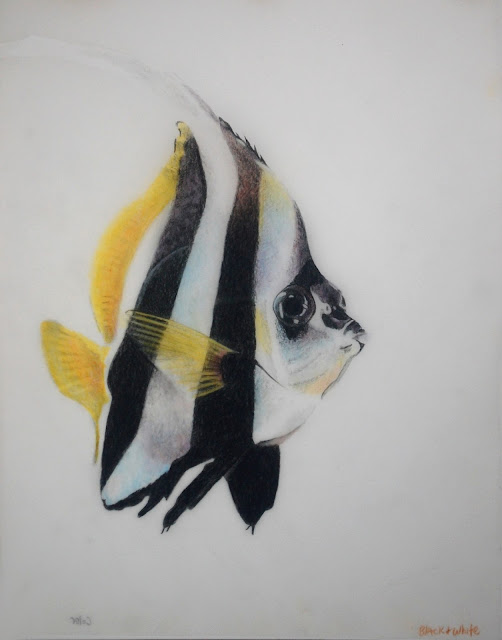 |
| Colored pencil on dark mat board. I worked on the eye on the right side. I need to finish the ears and lighten the entire thing and add shadows as needed. Then I need to add cream to warm the white. |
 |
| This is a photo of the black and white side after I applied color on the color side. |
 |
| This is a photo from the color side after I placed a background behind the fish. There are still some areas of the fish that are not completed yet, but this gives you the idea on how to finish. |





































